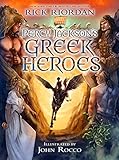"Astronomical Calendar" Found Inside Ancient Tomb In China
Language
Reading Level
Listen to Article
Alignment

Archeologists in China have unearthed what they believe is an ancient "celestial calendar." The 23 rectangular wooden pieces were found inside a 2,200-year-old tomb in China's Wulong District. They are etched with Chinese characters connected to an astronomical calendar known as Tiangan Dizhi. It was established during the Shang dynasty, which ruled from 1600 BC to about 1050 BC. This is the first time written slips linked to the ancient calendar have been found in a tomb.
"The wooden slips with calendric notations are significant as the first and only known example of that kind of inscription on that kind of object," Ed Krupp, Director of Griffith Observatory in Los Angeles, told Live Science.

The team, led by Huang Wei at the Chongqing Institute of Cultural Relics and Archaeology, revealed their discovery on December 5, 2023. The scientists say circular perforations on the edges of the bamboo strips indicate all 23 were once tied and used together. However, they do not know how the calendar, which was based on a 60-year cycle, worked. They theorize that one piece represented the then-current year, while the rest were used to highlight other years.

Based on the skeleton's condition, Wei and his team determined that the occupant was a strong, middle-aged male. The copper spears, bows and arrows, and other weapons found alongside suggest he may have been good at martial arts. The tomb also contained numerous high-quality objects, including copper and bronze pots. This has led Krupp to suspect its owner was a person of high status.
"The artifacts interred with the deceased are numerous and very, very fine," he said. "This is rich, expensive material."
Resources: Chinanews.com, Livescience.com, sciencetimes.com

Get the Workbook for this article!
Workbook contains: Article, Reading Comprehension, Critical Thinking Questions, Vocabulary in Context (+ answers), Multiple Choice Quiz (+ answers), Parts of Speech Quiz (+ answers), Vocabulary Game (+ answers)Cite Article
Learn Keywords in this Article
17 Comments
- singularity_4210 monthsI wonder what secrets could be unveiled
- kasudoraheja10 monthsI think this article is cool!
- braydin10 monthsi was in china and i im finding out now i wish i know souner
- izzyl0v3n00dl3s10 monthsweird? but intresting!
- doodlegirl10 monthsThis is an awesome find!
- bethanybeach10 monthsThis is very interesting I like it.
- firestarwarrior10 monthscool




